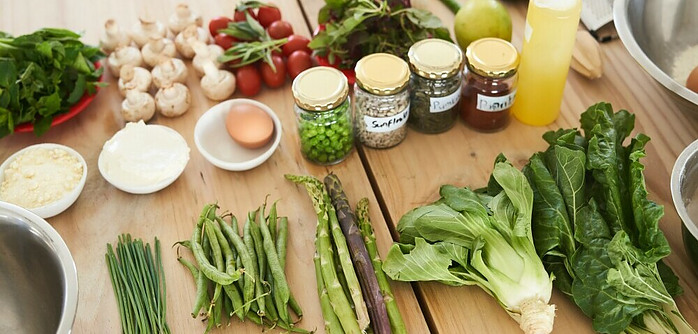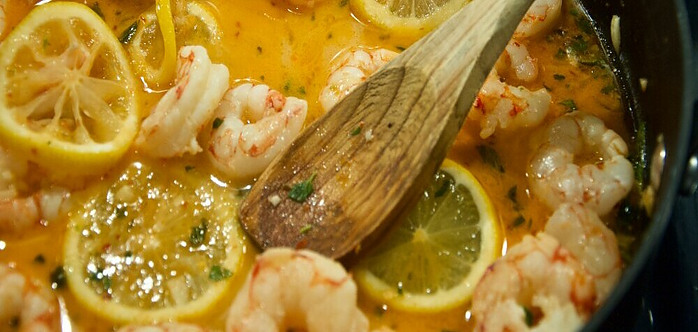
Welcome to the world of flavor profiles, the unsung hero behind every memorable meal you’ve ever had. It’s not just about identifying whether something tastes good; it’s about understanding the distinctive combination that makes each dish unique. Flavor profiles provide the overall taste characteristics of food or drink, forming a foundation for chefs and food enthusiasts alike. It’s like having a map in a treasure hunt; with a flavor profile, you’re exploring the distinctive features of culinary landscapes.
Understanding flavor profiles is the compass of culinary exploration. It guides through the vast arrays of cuisines, ingredients, and preparation methods. Imagine yourself embarking on a journey across the world’s kitchens, from the piquant curries of India to the rich, earthy flavors of Italian truffles. That’s the magic of having a grasp on flavor profiles – everywhere you go, you become a more knowledgeable and appreciative diner.
Now, I’m going to weave you a tale of a chef, a maestro of flavors, who embarked on this very journey. This chef sought the quintessence of taste, which led to an epiphany: flavors can communicate experiences, evoke emotions, and craft stories. It dawns on her that the sensory experience of taste is far more than the sum of its parts. As we step into the next section, you’re going to find out about the science and artistry that make up these flavor profiles.
Diving Deep into the Components of Flavor Profiles
 You’re about to unlock the secret world of flavors that chefs and food enthusiasts rave about. The components of a flavor profile are like a symphony’s instruments, each adding its unique sound to the overall experience. I’m going to walk you through these building blocks, so you can appreciate the nuances in your next meal.
You’re about to unlock the secret world of flavors that chefs and food enthusiasts rave about. The components of a flavor profile are like a symphony’s instruments, each adding its unique sound to the overall experience. I’m going to walk you through these building blocks, so you can appreciate the nuances in your next meal.
First up, let’s talk about the basic elements that make up every flavor profile. Sweetness often comes from sugars and imparts a pleasant, comfort-filled sense. Bitterness, on the other hand, can add complexity and depth to a dish, often signaling the presence of antioxidants. Acidity brings a bright, sharp taste that can cleanse your palate, while saltiness enhances other flavors and adds its own savory character. These tastes are the foundation upon which culinary masters build.
But flavor isn’t just about taste; it’s also about smell. The role of aromas is akin to a breeze that you feel but cannot see – it’s there, shaping your experience subtly. Aromas can create an anticipation, often invoking memories and emotions from deep within. They combine with taste to complete the sensory profile of a dish.
In my opinion, understanding how to communicate these flavors is akin to learning a new language – one that articulates the unique sensations when eating or drinking. Terms like ‘earthy’, ‘citrusy’, ‘woody’, or ‘floral’ help convey the distinct notes you may pick up in a dish or a glass of wine. They’re the adjectives that bring the noun, your food, to life.
The sensory experience is about how these tastes and smells play together. Think of it as attending a concert where each musician’s contribution is essential to the final performance. Sweetness could be the violin’s melody, the high notes that carry the tune, while bitterness might be the deep thrum of a cello, adding gravity and resonance.
Lastly, complexity and balance are crucial. These are what makes a flavor profile not just a random assembly of tastes but a thoughtful composition. The complexity comes from the layers of flavors that unfold as you eat. Balance ensures that no single taste or aroma overwhelms the others. Like our chef protagonist in the story, it’s about combining ingredients in a way that their flavors and aromas complement each other, creating a meal that’s memorable and leaves you wanting to embark on that taste adventure again and again.
Conclusion: The Endless Journey Through Flavors
 Now, after journeying through the intriguing components of flavor profiles, you have a map that can guide you through the intricate world of taste. Understanding the complex interplay among sweetness, bitterness, acidity, saltiness, and aroma unlocks a deeper appreciation of food and drink. It’s not just about identifying flavors; it’s about embracing the sensory experiences they provide.
Now, after journeying through the intriguing components of flavor profiles, you have a map that can guide you through the intricate world of taste. Understanding the complex interplay among sweetness, bitterness, acidity, saltiness, and aroma unlocks a deeper appreciation of food and drink. It’s not just about identifying flavors; it’s about embracing the sensory experiences they provide.
Remember our chef from the beginning? Her story didn’t end with mastering the flavor wheel; it evolved as She continued to experiment with new combinations, seeking to communicate each dish’s unique language. Her dedication to the craft mirrors your potential journey with flavor profiles – a journey without a final destination, where each meal is an opportunity for discovery and each sip a new chapter in your flavor narrative.
Flavor profiles are your culinary compass, guiding you to create or experience incredible dishes and drinks. Whether you’re fine-tuning your own recipes or savoring the complexities of a perfectly brewed coffee, the knowledge of flavor profiles enriches your adventures. So, keep exploring, tasting, and learning because the world of flavors is vast, and your journey through it is only just beginning. Cheers to the countless culinary expeditions ahead!
